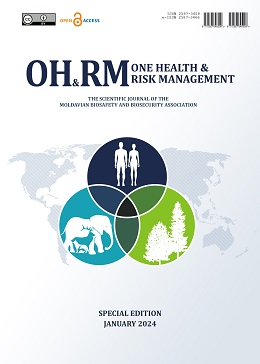Аннотация
Introduction. Being a sustainable and eco-friendly method of treating wastewater, constructed wetlands use microorganisms and natural processes to eliminate pollutants. Depending on how they are built, put into use, and maintained, they may offer a number of advantages as well as disadvantages.
The aim of the study was to improve the management of constructed wetlands by promoting their benefits and minimizing the associated risks.
Material and methods. A review of national and international scientific bibliographic sources on best practices for implementing constructed wetlands in wastewater treatment was conducted.
Results. Constructed wetlands are ecological infrastructures designed to replicate the advantages and functions of natural wetlands. These areas effectively clean and manage water, including wastewater, in a sustainable manner by harnessing the power of bacteria and natural processes. They also serve as habitats for aquatic life, including fish, plants, and microbes, which work together to filter, clean, and regenerate water. Compared to conventional wastewater treatment methods, constructed wetlands use less energy, require fewer staff for maintenance, effectively treat wastewater with dispersed pollution, help preserve biodiversity, and provide habitat for a variety of plants and animals. Additionally, they can enhance the visual appeal of metropolitan areas and offer higher resilience to climate change and extreme events. However, despite the numerous benefits of constructed wetlands, there are also challenges. These include the need for more space than traditional technologies due to the use of extensive areas of vegetation and soil, potentially longer implementation and installation times, and the potential for the development and spread of antibiotic resistance. Local conditions such as soil type, climate, and hydrological features can influence the efficiency of constructed wetlands, necessitating adjustments for each unique circumstance. These challenges can be addressed through effective design, meticulous material and plant selection, and the application of engineering techniques to enhance efficiency. Furthermore, the implementation of new biotechnologies focused on combating antibiotic-resistant pathogenic flora can help mitigate these challenges.
Conclusions. Constructed wetlands remain a valuable choice for sustainable water resource management and environmental protection, despite the challenges involved. With proper integration and management, they can serve as sustainable solutions for issues related to water quality, flood management, and biodiversity conservation.
The research was conducted as part of the JPIAMR projects: "Phage treatment and wetland technology as an intervention strategy to prevent dissemination of antibiotic resistance in surface waters" (PhageLand).
|
 Просмотры: 314|
|
Просмотры: 314|
|
Это произведение доступно по лицензии Creative Commons «Attribution» («Атрибуция») 4.0 Всемирная.

